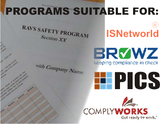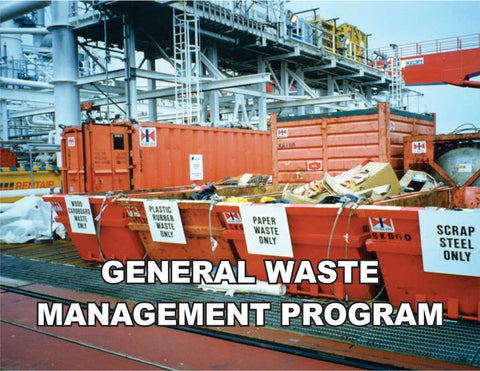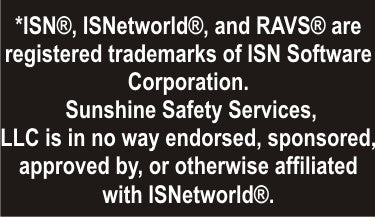General Waste Management Program - ISNetworld RAVS Section - US
$ 19.95
General Waste Management Program - ISNetworld RAVS Section - US

This General Waste Management Program (ISNetworld® RAVS®* Section), in addition to being a complete and functioning written safety program (chapter), it also contains all the required text elements that are sought by the ISNetworld RAVS® (Review And Verification Service) reviewer. This plan has been previously submitted and has achieved a 100% approval rating for our clients.
- All programs are guaranteed now and in the future to achieve 100% approval.
- There are NO maintenance or subscription fees.
- Simply notify us if any program falls out of compliance and we will correct it at NO CHARGE.
You are downloading a MicroSoft® Word document file to your computer that is completely editable:
- General Waste Management Program:
- Approximate Word Count: 880
- Approximate Number of Pages: 5
- Page Reference Answers to RAVS Reviewer’s Questions: 4
You will also receive instructions for a simple two-step process to place your company name and safety person's name throughout this word document to conform it to your company. Please review, and feel free to alter or add to it as you wish with any specific company information or safety policies that you may already have.
The first two pages of the document are guidelines for conforming this safety manual section, an index for completing the RAVS® questionnaire (with all page references), and uploading the section.
If you experience any difficulty filling out the questionnaire, or have any questions in general about these documents, call 314-570-0072, or e-mail me at vsunshine1@gmail.com.
An excerpt from ISNetworld® RAVS®* Safety plan General Waste Management Program
… CONSTRUCTION WASTE MANAGEMENT, GENERAL
Waste materials should be properly stored and handled to minimize the potential for a spill or impact to the environment. During outdoor activities, receptacles must be covered to prevent dispersion of waste materials and to control the potential for run-off. [2]
Provide containers for CDL waste that is to be recycled clearly labeled as such with a list of acceptable and unacceptable materials. The list of acceptable materials must be the same as the materials recycled at the receiving material recovery facility or recycling processor.
Provide containers for CDL waste that is disposed in a landfill clearly labeled as such.
If possible, include in material purchasing agreements a waste reduction provision requesting that materials and equipment be delivered in packaging made of recyclable material, that they reduce the amount of packaging, that packaging be taken back for reuse or recycling, and to take back all unused product. Insure that subcontractors require the same provisions in their purchase agreements.
Conduct regular visual inspections of dumpsters and recycling bins to remove contaminants.
CDL waste materials that can be salvaged, reused or recycled include, but are not limited to, the following:
Acoustical ceiling tiles
- Asphalt
- Asphalt shingles
- Cardboard packaging
- Carpet and carpet pad
- Concrete
- Drywall
- Fluorescent lights and ballasts
- Landclearing debris (vegetation, stumpage, dirt)
- Metals
- Paint (through hazardous waste outlets)
- Wood
- Plastic film (sheeting, shrink wrap, packaging)
- Window glass
- Wood
- Field office waste, including office paper, aluminum cans, glass, plastic, and office cardboard.
Employees must be instructed on the proper disposal method for wastes. This may include general instruction on disposal of non-hazardous wastes, trash, or scrap materials. If wastes generated are classified as hazardous, employees must be trained to ensure proper disposal. [3] The RSO, Replace with Safety Person’s Name, or designated representative will determine what level of HazWoper (hazardous waste operations) training is required....





